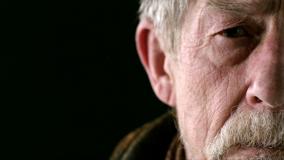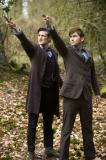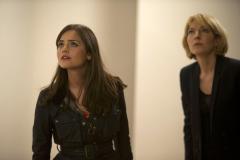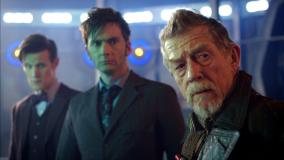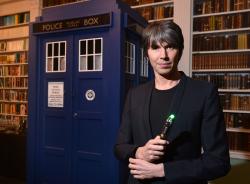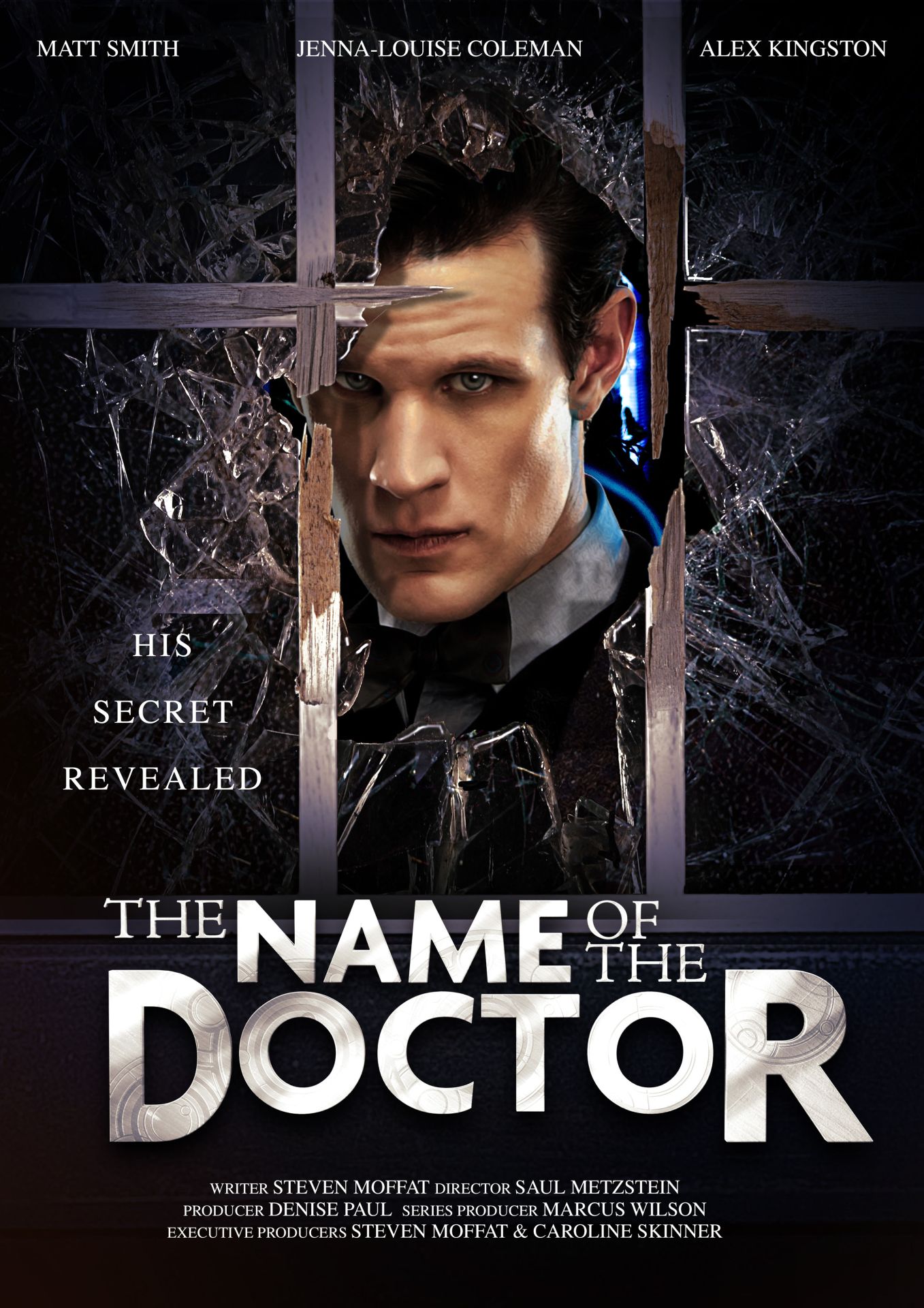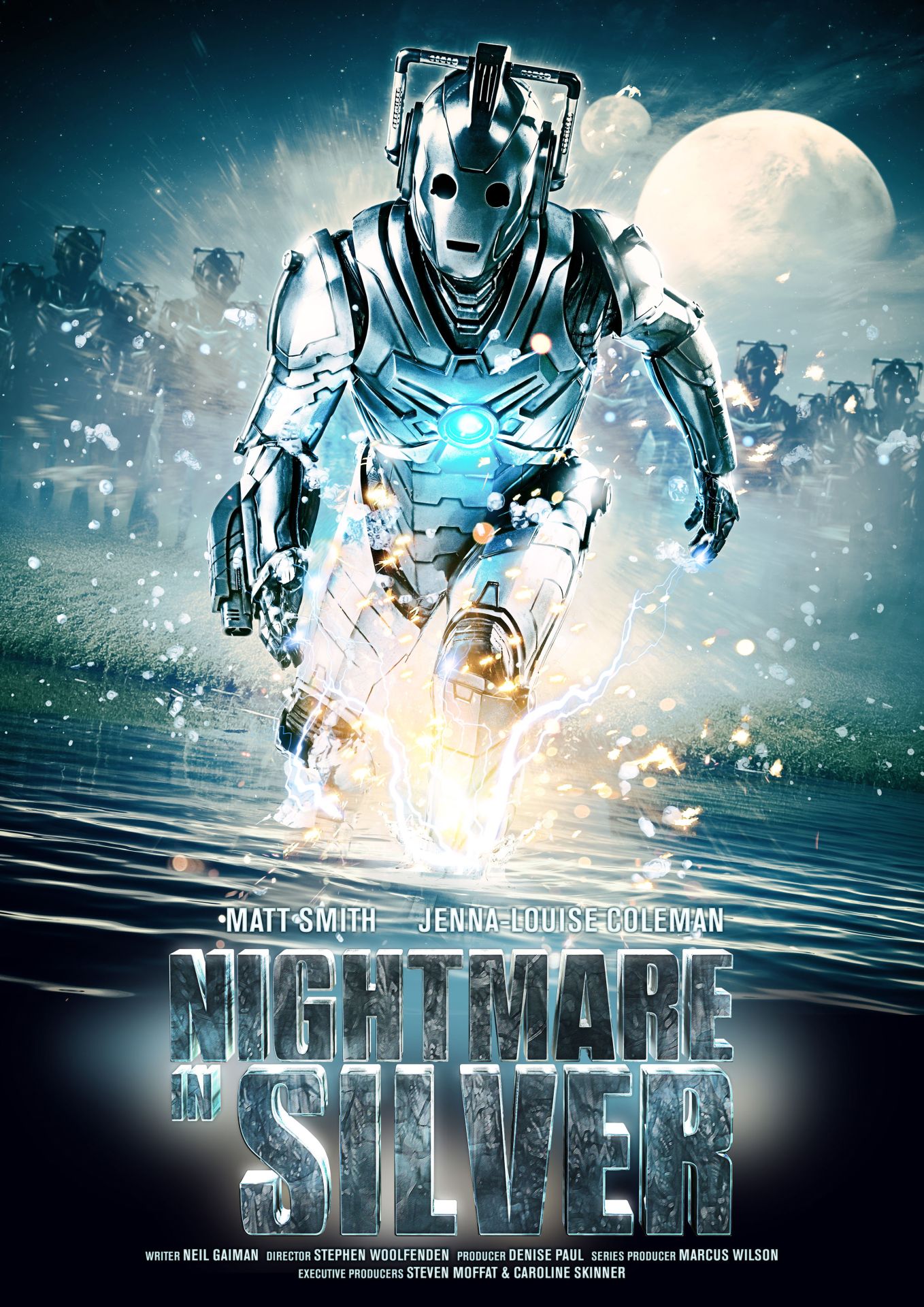The Time of The Doctor
Saturday, 28 December 2013 - Reviewed by
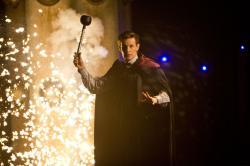
Doctor Who - The Time of The Doctor
Written by Steven Moffat
Directed by Jamie Payne
Broadcast on BBC One - 25 December 2013
Doctor Who tells its stories through image and sound as much as actors playing scripts. Incidental music reminded long-term viewers of the cause of the tenth Doctor’s regeneration, of Clara's history as 'impossible girl', of the Doctor's responsibility towards Amy Pond. The underpinning of The Time of the Doctor seemed to be repeated images deliberately referencing the past, particularly of children’s drawings, and the musical cues connecting to specific moments in previous stories. More than any of his predecessors, the eleventh Doctor has been explicitly coded as a children’s hero within the narrative. It’s a role he has had ever since bonding with Amelia in The Eleventh Hour and then a series of Amelia-substitutes, from Mandy in The Beast Below onwards through young Kazran in A Christmas Carol to the children in The Doctor, the Widow and the Wardrobe and beyond. Here, while the Doctor protects successive generations of Trenzaloreans, he cherishes the pictures of him they have drawn as children, spreading across the walls and pillars of his tower home, much as Amy Pond grew up recounting and embellishing the legend of the man who one night had eaten fish fingers and custard at her kitchen table and then disappeared. On Trenzalore, the Doctor becomes both story and storyteller, building a culture around himself complete with Punch and Judy version of The Ark.
This wasn’t the only recycling of old visual cues. The placing of the Oswald family in a tower block acted not only as a mirror of the Doctor’s home on Trenzalore, but of Rose’s flat back in the 2005 and 2006 series. The location – Lydstep Flats, Cardiff – was the same used for the ‘back’ of the Powell Estate in Rose, encouraging a sense that Doctor Who is going back to one of its beginnings, though there’s an awkwardness about the Oswald family which is distinct from the awkwardness I felt from the Rose, Mickey and Jackie background. There, the discomfort came from the broad playing of acute if subjective social observation, alleviated a little when one realised how far the series was written and interpreted through Rose’s eyes. Here, the cumbersome nakedness-hologram gag is used as a blanket to cover the sense that we really don’t know much about Clara’s background; it’s difficult to place the flat setting alongside her work for the Maitlands and the glimpses of her parental home(s) we saw in The Rings of Akhaten. Perhaps this just means that the Doctor Who of 2013 views society as more fluid and less rigidly stratified than that of 2005; but if so, Lydstep Flats are a curious borrowing in an episode which expected and demanded that viewers remember much more detail from past episodes than has been usual.
In its revival of the crack in the universe which propelled the 2010 series, the episode’s explanation seems muffled and misdirected. The Doctor’s reminiscence of rebooting the universe following its destruction on 26 June 2010 tended to assume knowledge rather than provide it. The conversation in Tasha Lem’s chapel explaining about the Kovarian faction’s breakaway from the main body of the Church of the Silence was almost apologetically undramatic. The return of the device of a victim of Dalek re-engineering forgetting that they had died before sprouting eyestalk and gun-stick was thrifty in terms of the reuse of an effect, but the manner of the reintroduction had something hollow about it. This was redeemed somewhat by the Doctor’s successful resurrection of Tasha’s identity and his reminder of what the Daleks represent: they embody the potential for dissociated self-obsession and the destructive force isolation and lack of empathy can unleash. If Tasha has already battled this within herself for centuries, she can and does defeat the Dalek within. A pity the Doctor’s line about the inner psychopath seemed somewhat thrown away.
The rapid introduction and disposal of good ideas was almost a signature of the episode. The Doctor ate up brilliantly-sketched but underdeveloped personas, especially his James Stewart-like sheriff. (I remembered the supposed influence of James Stewart’s Destry [which I have seen] on Patrick Troughton’s Doctor, but it took Christopher Stevens in the Daily Mail to point out the links with another Stewart western, The Man Who Shot Liberty Vallance [which I have not].) Not out of step with the episode’s obsession with clergy is the parallel presentation of the Doctor as an old priest, teleporting out from the confessional, and making better use of confidences than the memory-erasing Silence or the faith-switching Tasha Lem. All are manipulators, but the Doctor at least is conscious of the burden of guilt. A pity, again, that the audience was not presented more directly the comparison between the Doctor and Tasha, and for Tasha to be more noticeably self-aware. Driving the TARDIS is easier than driving the Doctor, but one wasn’t sure that the script had a good idea of what that meant, a pity for an episode where tone and some of the content suggested that it was to be taken as a contemplation of Doctor Who’s values and who the Doctor was.
There was little sense, too, of the Doctor’s enemies as being more than archetypal threats. The effectiveness of the Cybermen has been in decline since The Tenth Planet and variations on their physical form are perhaps the best entertainment they provide. Perhaps a chocolate Cyberman, based on the wooden model could be licensed in time for Easter... The Sontarans now seem to be following the comedic model into which Strax has fallen (nevertheless entertainingly). These three, like the Angels, were there to do their turns, the Angels seemingly being trapped in much the same way they were in Blink (though this wasn’t well articulated).
The Daleks, naturally, had the best spot on the bill and the most to do, successfully overcoming the Church of the Silence half-way through the Doctor’s sojourn on Trenzalore, though seemingly for continuity reasons as this enabled them to recover (some of) the knowledge of the Doctor removed from their data banks in Asylum of the Daleks. They were the spokesbeings too for the besiegers at the climax and had the privilege of being the first to be annihilated (presumably) by regenerative energy. The shot was spectacular, but one wonders if turning these latterday bursts of golden transmogrifative flame into destructive weapons is necessarily a good thing in story terms. Given, though, that the town of Christmas and the world of Trenzalore are largely symbols of what the Doctor chooses or is forced by circumstance to stand for, then his monstrous foes are here his inner demons and the support of friends – the Time Lords and Clara – give him the strength to overcome them. The journey into the mountain to find the new man is made again.
If town and planet are to be largely understood as figurative, then seasoned television-watchers were deliberately misled by their introduction. Tessa Peake-Jones and Rob Jarvis are both actors whom one might expect to remain in a programme for more than one scene. Their briefing about the truth field seemed to have sinister possibilities, but as it turned out they were unwitting observers of the darkening clouds around the Doctor, not the manipulators we were encouraged to believe. Once the Doctor was trapped on Trenzalore then viewers were reversed out of a narrative too drawn out to be entertaining, and shown only the more dramatic moments. It’s not surprising, though, that this could feel like a betrayal to part of the audience. To some extent this was acknowledged by Clara’s dismissal by the Doctor, a bravely undisguised borrowing from The Parting of the Ways. In clinging to the TARDIS she is battling to remain part of the story; her survival where Captain Jack expired is another mark of her uniqueness. The presentation of Clara reminded audiences of her particular status as the impossible girl while drawing more widely from the generic heritage of the post-2005 companion. It remains to be seen whether this compromises any further development of her background in the long term.
Clara wasn’t the only companion to appear in this story. Handles the Cyber-head was a metallic realisation of Tom Baker’s talking cabbage, and a reminder of the Doctor’s need for someone to talk to. The withdrawal of the Doctor from continuous human contact has been a feature of the latter part of the eleventh Doctor’s period; the Ponds became people he visited and took on trips rather than travelled with, and emphasis has been placed on Clara’s home life and latterly career to which she returns. Given that Clara provides the resolution to the problem by telling the Time Lords that the Doctor is the only name he will ever need, the Moffatian paradox at the heart of this story is one based around the Doctor’s judgement – had he not sought to protect and had trusted his human best friend more, he might not have needed to put himself and Trenzalore through this standoff and not have needed to regenerate – though may not have gained the new regeneration cycle too. At the end, of course, it’s Amelia Pond whom the Doctor hallucinates, whose face lends definition to the Doctor’s own; we are asked to wonder whether consuming fish fingers and custard delayed the Doctor’s full physical transformation long enough for him to say goodbye to Clara.
The Time of the Doctor deserves plaudits for its ambition; the Doctor choosing to let himself be trapped in one place for centuries to protect a people and a cosmos from destruction, and gradually ageing at and as the heart of the place, is a powerful idea. The execution was perhaps compromised by expectations and by wilfully leading those expectations on. The protracted nudity joke didn’t help many, including me, but perhaps other parts of the audience, particularly the younger ones, were more committed to it. The plight of Christmas Town and the Doctor’s relationship to it – how far could the townsfolk have blamed him for their situation? – could have been expanded upon. Patrick Mulkern at Radio Times online has rightly pointed out the debt the set owes to the Christmas Radio Times of 1977, but more than this visual allusion to an item from parental childhoods was needed to give some sense of the people of Christmas Town and their community. Again, perhaps, the children’s love for the Doctor and its resonance with the crucial younger section of the audience was crucial.
Arguably, though, the bulk of the episode was mood-setting for the final few minutes, which was the most tightly conceived and performed. The false dawn of the eleventh Doctor’s restored youth and Jenna Coleman’s portrayal of an apprehensive, relieved and then frightened and bereaved Clara were surprisingly moving after an episode which largely failed to emotionally involve. In promising never to forget ‘one line’ of his existence in Matt Smith’s form, the Doctor recognises that he is at least the subject of a history or chronicle, if not an outright fiction. Clara’s desperation to hold on to the Doctor was met with silent, shuffled retreat, denying Clara the consolation of touch as if the eleventh Doctor was already a Shakespearean ghost or even Christ between resurrection and ascension. A pity, then, that the sudden manifestation of the twelfth Doctor took the form of a ritual which understood the formula, but not the heart, of something which should never have been treated as liturgical – the remark about a transformed body part, the TARDIS crashing – with the only variation being the new Doctor’s specific amnesia over TARDIS steering.
The Time of the Doctor didn’t answer every question remaining from the eleventh Doctor’s era. We don’t know who the woman was who gave Clara the Doctor’s telephone number, for example; but that belongs to Clara’s storyline more than it did the eleventh Doctor’s. The revelation that the eleventh Doctor was really the thirteenth physical form of this Time Lord was clearly a late decision, sitting unhappily if not entirely contradicting some earlier episodes (not that this is new in Doctor Who). The grant of a new regeneration cycle by the Time Lords was a surprisingly easy solution to an anticipated problem. I’d been imagining something complex involving cracks in the fabric of the universe, the Eye of Harmony and covetous alien species.
This has been a fragmentary review of an episode which I enjoyed more than many but which nevertheless didn’t quite satisfy in the way that I had hoped. It didn’t feel as considered as The Day of the Doctor or even the first part of this trilogy, The Name of the Doctor. One wonders if there will be any consequences for the Doctor’s erasure of his tomb on Trenzalore; the discontinuity reconciler in me speculates that perhaps at some point someone – River? – established a false graveyard and a false TARDIS-tomb. It was, however, bold in conception even if the demands of the execution didn’t quite work, like a Christmas comedy show by almost anyone other than Morecambe and Wise. There was so much which could have been helped by a few additional lines of dialogue, or different intensity of performance. The central theme was just enough to carry the episode through to the regeneration itself, and all the performers made the very most of what they were given, but one hopes for a more assured set of Doctor Who episodes in the autumn.

